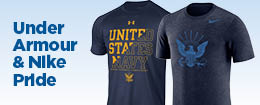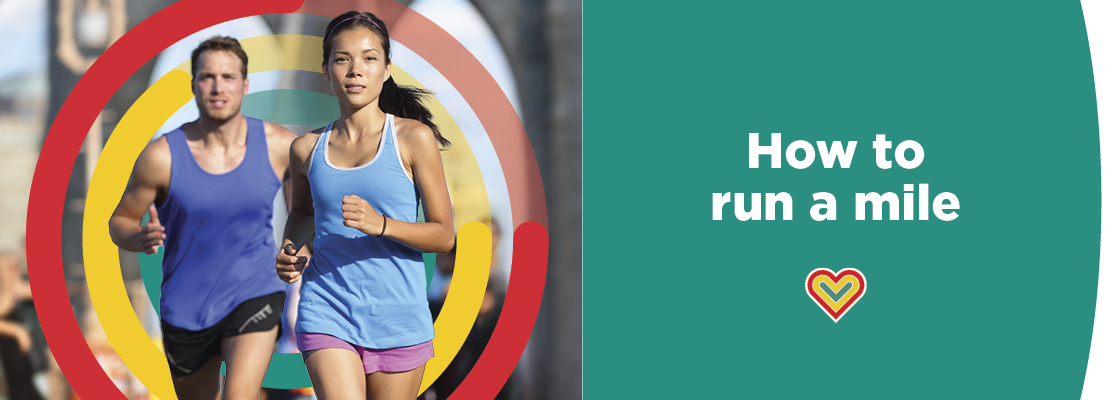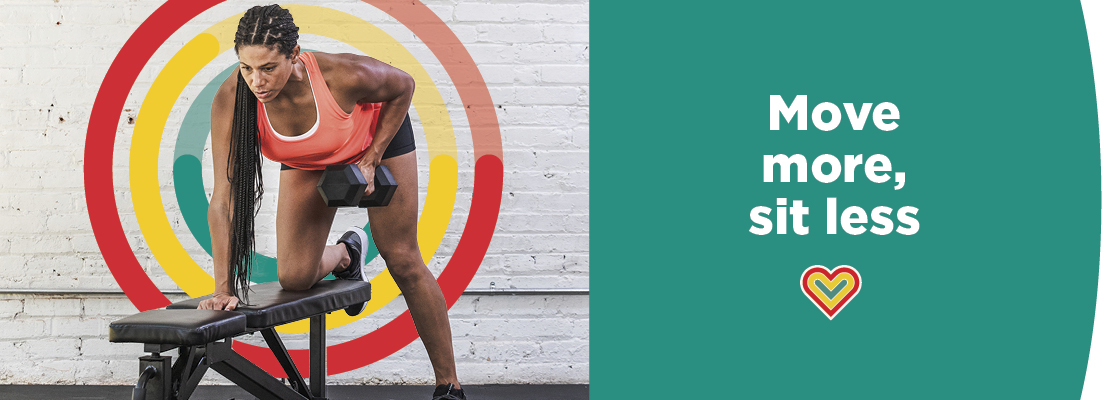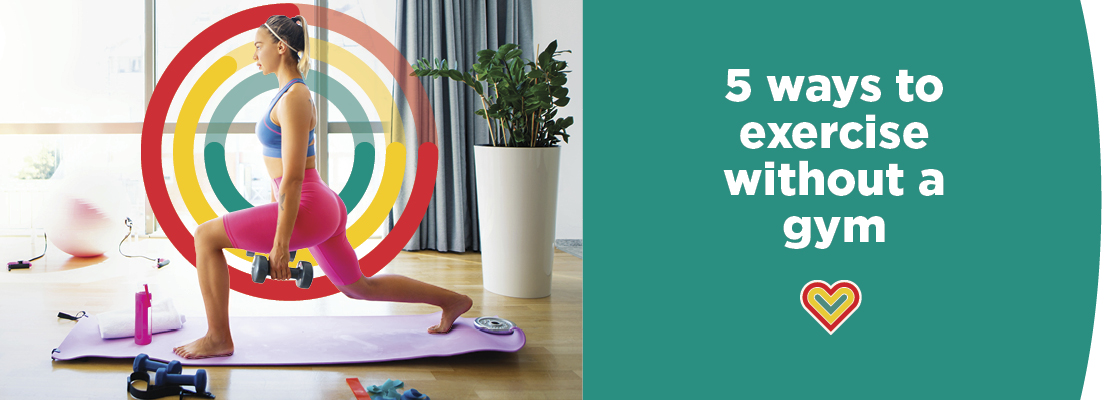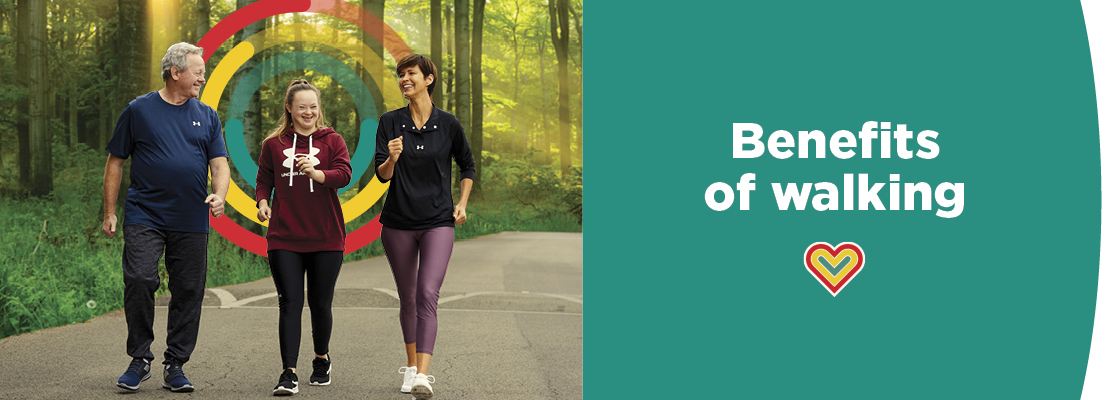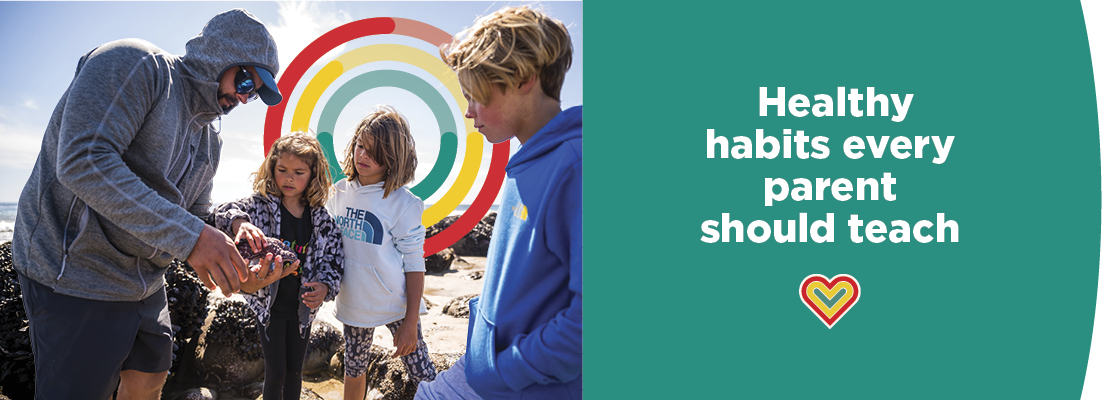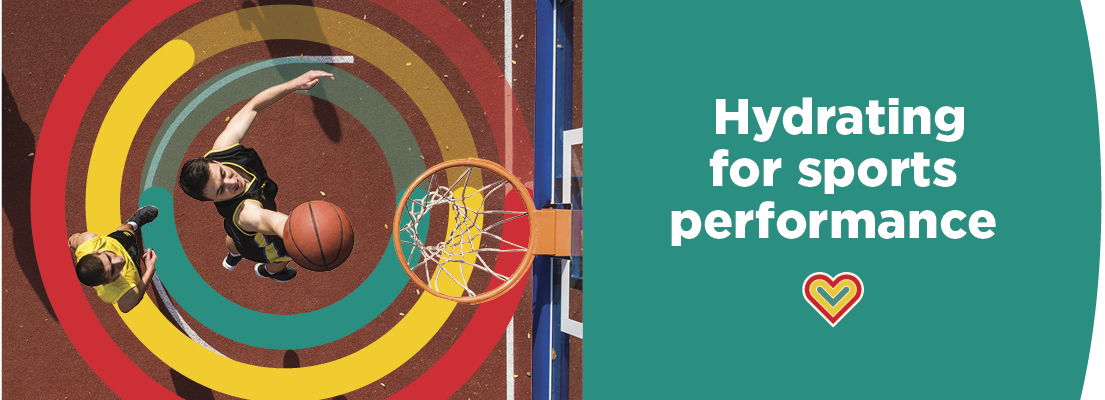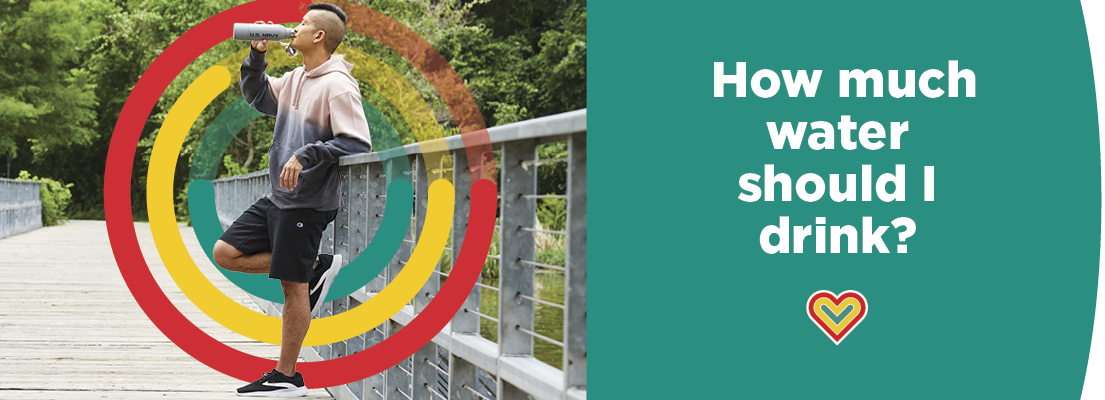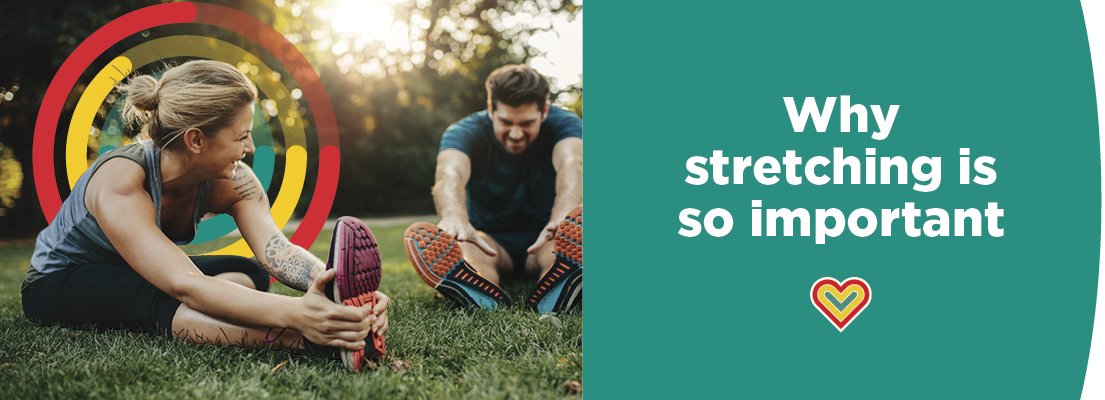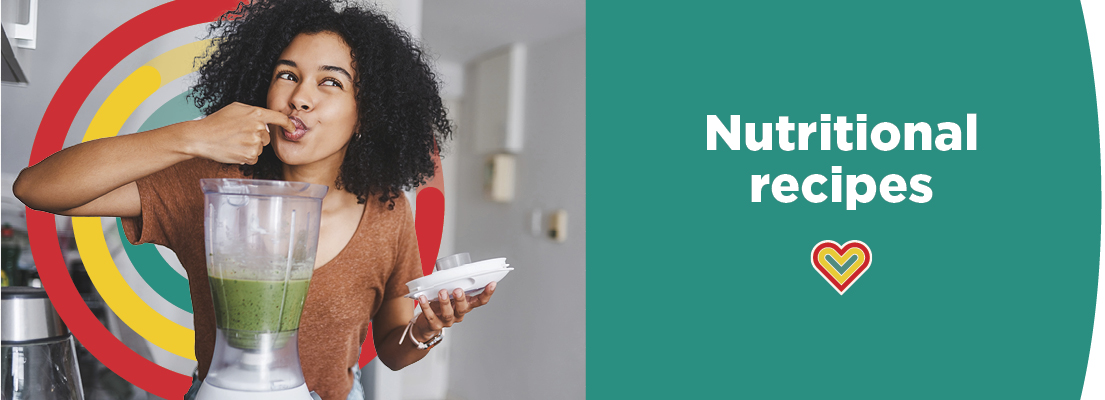If you’re trying to pick up the habit of cardio exercise, a good goal is to try and run a mile without stopping. Not a runner? Don’t worry! You can train to run a mile in just a few short weeks with an interval training program. With a little determination, consistency, and our tips below, you’ll be pounding the pavement in no time!
Always warm up
Walk for at least 5 minutes before you begin jogging! Not only does it get the blood flowing in your muscles, but moving your body from a state of sitting to walk tells your body that you’re about to start running. Mentally, this helps you take on the challenge.
Use a walk-run strategy
Find a walk-run plan that fits your skill level. Walk-run plans are broken down into intervals that start with mostly walking and end with mostly running, which helps you build up the stamina to run a full mile without stopping. In week 1, try jogging for 1 minute, walking for 4 minutes, and repeat 4 times. In week 2, increase your run time by a minute and decrease your walk time by a minute, so by week 4 you’re jogging 4 minutes and only walking 1 minute!
Focus on your breathing
Feeling winded can make it tough to complete the entire mile. A good rule of thumb is to try to run at a pace where you can still speak in phrases or sentences. So, if you’re panting and gasping for air while trying to talk, it’s a signal you’re likely going too fast. Try slowing down to get a nice rhythmic breathing going, focusing more on running at a pace where you’re not completely out of breath, in a way that feels natural to you.
Build in rest days
Your body deserves a break! Aim to have 1 to 2 rest days throughout the week in order to let your muscles recover from the hard work they’re doing.
Incentivize and reward yourself!
Is there an item you’ve had your eye on at the Exchange? Make it your reward for achieving your goal of running a mile! Associating the finish line with a reward will keep you motivated and on track.
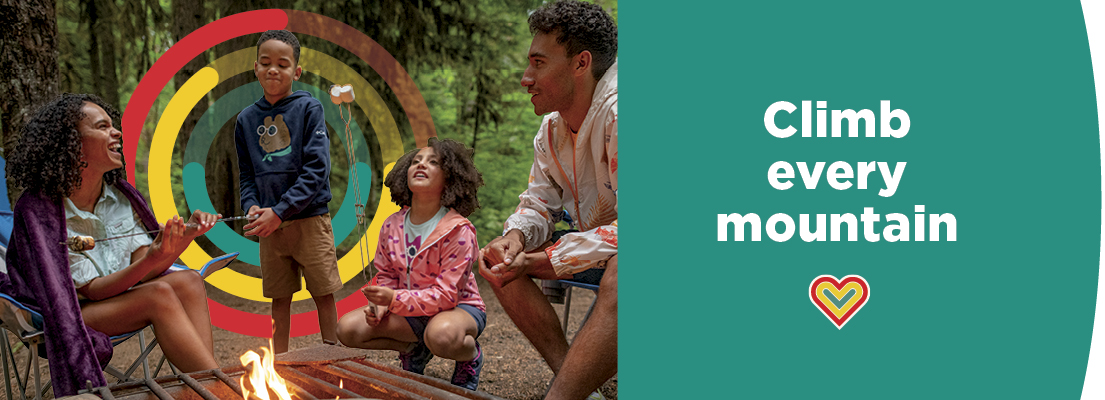
Put down the devices, grab the kids, and get outside! Exercising in nature can help mental health and boost your heart rate. Whether you’re climbing a steep mountain, or on a winding dirt trail, hiking provides many benefits including building stronger muscles and bones, improving cardio fitness, and reducing stress and anxiety.
The average beginner hiker can hike about 3 miles per hour at a regular pace. Go online to research trails in your area. Most sites provide mileage, difficulty levels – easy, moderate or strenuous, and whether it’s dog-friendly.
The number of calories you burn during hiking, depends on your weight and the steepness of the path. A 150-pound person on a mild grade path will burn about 360 calories per hour. While a 180-pound person on a medium to steep grade will burn about 656 calories per hour.
If you’re actively hiking, it’s good to drink about 1 liter (32 oz.) of water every two hours. Try and take sips every 20 minutes. Water bottles should be easily accessible, like a backpack side pocket. The tougher the trail, the more water you’ll need to drink.
Heart Rate
Know your "target" heart rate. The target heart rate is a range giving you the most benefit from exercise. First, calculate your maximum heart rate - the fastest your heart should beat during activity. For women, multiply your age by 0.88, and then subtract that number from 206. For men, subtract your age from 220.
Now that you know your target range, you can monitor your heart rate during your next hike. At about 20 to 30 minutes into the hike, stop and place your index and middle fingers on the carotid artery on your neck. Look at your watch and count the number of beats you feel in 10 seconds. Multiply that number by six to get your beats per minute - or BPM. If you want intense exercise, that BPM should fall within 70 and 85 percent of your calculated maximum heart rate – though the 50 to 70 percent range will also provide you a good workout. From there, hike faster or slower to stay within your target range.
Any activity is better than none. Being sedentary increases your risk of heart attack and stroke. With many of us working remotely, it’s easy to slip into a sedentary lifestyle. It’s important to avoid sitting all day long. Be sure to schedule “movement breaks” every hour. Take a walk, take the stairs, walk to a coffee shop, or meet a friend at the gym. A standing desk may also help, and improve your posture.
Light lifting
With light dumbbells, you can incorporate bicep and tricep workouts while walking. Exercises include shoulder presses, overhead tricep presses, and bicep curls. Holding an extra weight in your arms improves the workload on your upper body and burns more calories. Begin with a one-pound dumbbell on each arm. Keep your arms close to the body and swing them naturally as you walk. Be careful not to swing your arms quickly, which increases the risk of injury to arm joints.
Beginner dumbbell workout
These days, you may be working out from home versus a gym. Here are seven easy exercises that work your entire body. Use weights between 5 and 10 pounds, slow and controlled movements, and complete 10-13 reps each:
- Bent over row
- Bicep curl
- Tricep kick-back
- Bench press
- Lateral raises
- Overhead press (seated or standing)
- Lunge
Swing into kettlebell workout
Beginner kettlebell exercises are an excellent way to add variety to your strength training workout routine, to tone muscles, and improve balance and strength. To get started with a 20-minute beginner kettlebell workout, you'll need a 10- to 15-pound kettlebell (or 4 to 6 kilograms). If you feel comfortable to go heavier, start with a 20-pound kettlebell.
Complete circuit 3 times:
- 8 Halos (each side)
- 10 Goblet Squats
- 8 Overhead Presses (each side)
- 15 Kettlebell Swings
- 8 Bent Over Rows (each side)
- 6 Front Rack Reverse Lunge (per side)
No gym membership? No problem! Whether you’re trying to save time, money, or you’re just more comfortable exercising at home, here are a few easy and creative ways to get in shape without a gym.
Go for a walk
Walking is one of the most underrated exercises and it’s also one of the easiest ways to get moving. Consistent walkers see improvements in cardiac risk factors such as cholesterol and blood pressure, as well as mental health benefits like improved sleep quality, reduced stress and anxiety, and increased energy and stamina.
Free workout videos
Online workout classes are great because you can do them virtually anywhere. There are also several videos out there that don’t require equipment, so there’s no excuse!
Take the stairs
Whenever possible, take the stairs rather than an escalator or elevator. You can even walk up and down the stairs at home or in your apartment building for an effective workout. Climbing stairs actually burns more calories per minute than jogging!
Make your own gym
Invest in some light equipment like dumbbells, a yoga mat, and resistance bands. You can transform your living room or office space into a temporary gym, then stash that small equipment away once you’re done.
Get creative!
Not into the typical workout structure? There are tons of activities that don’t feel like exercise but actually are! Get up and dance, plant a garden, play with your kids at the playground, jump on a trampoline, play outdoor games like tag or capture the flag, or even clean the house. The point of being active is to train your body and mind that it’s fun and not something to dread—so, think outside the box… your options are limitless!
Sometimes it's easy to think that the process of becoming healthier is necessarily going to be unpleasant, or at least not very enjoyable. For example, we sometimes make the mistake of thinking that to get any real benefit from exercise, we'll have to exert ourselves to the point of misery or exhaustion. It should come as a welcome relief, then, that something as easy, natural, and enjoyable as a daily walk is one of the healthiest things you can do for your body, mind, and soul. Walking delivers a host of powerful benefits that impact everything from your body image to your personal relationships, your cognitive performance to your creativity, your stress, and energy levels to your sense of self-empowerment, and much more. (Pretty amazing, right?) Ready to go on a "walk" together to explore these truly amazing benefits? Let's go!
Walking can help you be happier with your body
In a study titled, Improving Body Image One Step at a Time: Greater Pedometer Step Counts Produce Greater Body Image Improvements, it was discovered that women's satisfaction with both their physical function and personal appearance increased with the number of daily steps they took. This study has since been replicated multiple times, and the same benefits have been found to apply to men.
Walking can improve your relationships
Studies have repeatedly demonstrated that the movements of people who walk together naturally sync up and that this physical synchrony leads to greater emotional synchrony. Christine Webb, Ph.D., a postdoc fellow in psychology at Emory University who has devoted much of her career to studying the relational and conflict-solving benefits of walking, explains, "When you're walking with someone, your forward momentum is not purely physical, but also psychological. You begin to feel more connected to the other person."
Walking can enhance your cognitive performance
Neuroscientist Shane O'Mara, Professor of Experimental Brain Research at Trinity College Dublin, asserts that walking unleashes the cognitive powers of the brain like nothing else. "[When] you're walking," he says, "there are all sorts of rhythms happening in the brain as a result of engaging in that kind of activity, and they're absent when you're sitting. One of the great overlooked superpowers we have is that, when we get up and walk, our senses are sharpened. Rhythms that would previously be quiet suddenly come to life, and the way our brain interacts with our body changes."
Walking can fuel your creativity
A Stanford University study found that walking skyrockets creative capacity. In the study, 176 adults were asked to tackle a variety of tasks that required "divergent thinking" — a mindset shown to be central to the creative process in which challenges can be approached in unusual, "outside-the-box" ways -- to generate innovative solutions. When research participants were reassessed on these tasks after taking a short walk, their divergent thinking scores shot up a whopping 60%.
Walking can reduce your stress levels
Walking in an environment that provides a sense of contact with the natural world (even if this is only through a wooded city park) will significantly reduce your stress hormone levels. That's the conclusion of researchers who conducted a study published in Frontiers of Psychology that revealed that a twenty-minute nature walk caused cortisol levels to plummet. And because chronically elevated cortisol levels have been implicated in excessive abdominal fat storage as well as fat-loss resistance, daily walks — despite burning relatively few calories — may help you slim down.
Walking can elevate your energy levels
If you're feeling tired or sluggish, a walk may be more effective at putting some pep back in your step than a nap. Research shows that walking can elevate energy levels even among people with chronic medical conditions. "A lot of times when people are fatigued, the last thing they want to do is exercise," says researcher Patrick O'Connor, Ph.D., co-director of the University of Georgia exercise psychology laboratory in Athens, Ga. "But if you're physically inactive and fatigued," continues O'Connor, "being just a bit more active will help."
Walking can enhance your sense of self-empowerment
Many studies show that the simple act of rising from a passive, seated position to an active, standing position instantly increases feelings of self-empowerment. Researchers speculate that the physical expression of standing communicates the emotional message to the brain, "I can stand on my own two feet."
But walking takes this intriguing finding even further. Walking communicates the emotional message to the brain that we can literally "take a step" to get where we want to go. Walking somehow seems to send emotional messages to the brain that we have choices available to us that aren't within reach while sitting (or just standing). This further enhances the feeling of personal empowerment by giving us a sense of expanded options and possibilities and the confidence that we can literally "move forward" to successfully reach them.
Step up your walking game!
Hopefully, by this point in our "walk," there's no question about the amazing health benefits of this activity! But you can make your walks even more awesome with the right gear. Here are a few ideas for taking your walking game to the next level!
- Comfy walking shoes. It all starts here! NEX carries a huge selection of walking shoes in every style designed for helping you comfortably "hit the road" (even if it's not of the paved variety)! From athletic walking shoes from brands like Nike, Asics, Adidas, and more, to everyday-casual styles from brands like Sketchers and Easy Spirit, you'll find your perfect pair at NEX.
- Water bottle. Even if you're headed out for only a short walk, it's still nice to know you have hydration on hand. And for longer walks, a water bottle is essential, even if you decide you'd rather fill it with your favorite refreshing beverage!
- Wireless earbuds. Invest in a pair of wireless earbuds so you can make your walks that much more enriching and enjoyable with your favorite music, podcasts, audiobooks, or TED Talks. Once you find the right wireless set (there's one for every budget), you'll never go back to the hassle of corded versions.
- Pedometer. Your smartphone can easily double as your pedometer, but sometimes it can feel freeing to "unplug" and leave your mobile device at home. A more traditional pedometer is an inexpensive way to track your steps without being tethered to your tech.
- A sunhat or sunscreen. Shielding your skin from UV rays is important all year long, but as the days grow longer, you'll want to be extra vigilant about using sun protection during your daily walk.
Children imitate those around them. They look up to their parents, so leading by example is very important. Many kids today are overweight or obese. A healthy weight can help prevent issues such as diabetes, heart disease, asthma, and high blood pressure. Help your kids make healthy choices now, for lifelong benefits. Here are 4 tips to get started:
Be positive
Tell kids what they CAN do and celebrate successes. Use positive affirmations that teach kids to love themselves.
Limit screen time
Children and teens are immersed in the digital world. Make a family media plan and set limits. Overuse of TVs, computers, and video games can lead to a sedentary lifestyle and impact sleep.
Eat better
Eat more vegetables and fresh fruits. Bake, broil or grill foods. Start the day with a healthy breakfast to refuel and provide energy. Reward children with praise, not food.
Move more
Try to get between 30-60 minutes of physical activity each day. Play tag, jump rope, or walk as a family before or after meals. When on vacation, include activities such as hiking or biking.
Water is the most abundant (and overlooked) element in the body. In fact, experts rank water second only to oxygen as essential for life and say most of us aren't getting enough water.
Whether you're just starting out with an exercise plan or you're a highly trained athlete, we've got some quick tips to help you understand the importance of hydration on your performance.
The importance of pre-hydration before your workout or event:
- The American College of Sports Medicine recommends drinking 14-20 ounces of fluid 2 hours before exercise to make sure you're adequately hydrated.
- Athletes who are dehydrated when they start competing don't perform as well. Why? Starting your workout dehydrated reduces the amount of fluid circulating in your bloodstream and bathing your body's cells. Less circulating fluid makes your heart work harder during exercise, drives up your heat production, and limits your body's ability to cool itself. Increased body temperature also affects your mental performance.
- According to the ACSM, being dehydrated by more than 2% of body weight can significantly affect performance.
- Drinking water regulates your body temperature. That means you’ll feel more energetic when exercising. Water also helps fuel your muscles.
Why you need to stay hydrated during exercise:
- In a dehydrated state, your muscles fatigue and may develop cramps.
- Hydration keeps your heart rate lower, longer.
- Both aerobic and endurance activities are affected, performance worsens in a hot environment and as dehydration increases.
- Hydration keeps you from overheating. As you exercise, your muscles generate heat. The body dissipates this heat through sweat, and as the sweat evaporates, it cools the tissues beneath. Since sweat is made up of about 95% water, you need water in order to sweat normally.
- Water acts as a lubricant for muscles and joints and it helps cushion joints to keep muscles working properly.
- Approximately 70-75% of muscle is made up of water, so maintaining the right water balance is necessary for peak muscle performance.
- Athlete studies show a 1% loss in body fluid will slow you down 2%.
Don't stop there! Be sure to stay hydrated after, too!
- Proper hydration has been shown to relieve back and joint pain for as many as 80% of sufferers.
- Wake up! Dehydration is the #1 cause for afternoon fatigue.
- By the time you're thirsty, you're already dehydrated.
- Hydrated skin looks younger: Your skin is the first place to lose water. Water delivers the nutrients your body needs—never run on empty.
*Article originally posted on www.camelbak.com/en/hydrated/performance/hydrating-for-performance and was written by Doug Casa
Many people don’t realize the amount of water you drink has an impact on both your health and your weight loss efforts. Drinking the right amount of water every day can speed up your metabolic rate and help to curb overeating when your body confuses hunger and thirst.
To determine how much water you should consume daily, multiply your body weight by 2/3 (or 67%). For example, if you weigh 175 pounds, you should be drinking about 117 ounces of water each day. Keep in mind that you should also adjust this number based on your daily activity. A good rule of thumb is to add 12 ounces for every 30 minutes of activity. Other factors like climate, pregnancy, and breast feeding can also impact your intake levels and you may need additional fluids in order to stay hydrated.
- Builds stronger bones
- Improves joint flexibility
- Promotes weight loss
- Boosts metabolism
- Improves gut health
- Reduces wrinkles
- Promotes youthful, radiant skin
- Strengthens hair and nails
Stretching is an essential component to health and fitness, yet it’s often overlooked. It isn’t given nearly enough importance as cardio, strength, and power training, but stretching is just as pivotal for physical fitness as sweat-inducing workouts. Here are just a few reasons you should start a regular stretching routine:
Increases flexibility
This one is pretty obvious, but the benefits of being flexible are crucial for your overall health. Improved flexibility can help you perform everyday activities more efficiently and delay the muscle stiffness that comes with ageing. When your muscles are tight, it decreases your range of motion, which increases your chances of straining a muscle. Therefore, regular stretching can also help reduce the risk of injury.
Improves blood flow and circulation
Stretching regularly increases blood flow and nutrient supply to tired muscles which can naturally reduce soreness. Better blood circulation helps to reduce recovery time after a tough workout or any physical labor, and it also affects your brain and improves your mood!
Improves posture
Do you sit at a desk for several hours at a day? Slouching over your computer causes tense and tight muscles which compromises your posture. Stretching helps keep your muscles loose and your spine correctly aligned. Focus on your stretching your shoulder, chest, and lower back muscles to promote proper alignment. Not only will your posture improve significantly, you’ll stop feeling the need to slouch when you work!
Relieves stress and anxiety
Stretching is a natural stress reliever! When you’re stressed, your muscles tend to tighten up in response to physical and emotional stress. Stretching eases tension in the muscles and will leave you feeling more relaxed. It also works as a mental break for your brain, which can help reduce anxiety by calming your mind.
A nutritious diet is a key component to looking and feeling our best. However, most of us live hectic, face paced lives and we aren’t always able to get all of the nutrients we need from our food alone. Nutritional supplements are one way to make the most of what you are consuming. The simple recipes below use few ingredients, but are full of health benefits. For example, one smoothie made with Macro Greens contains 5 servings of fruits and veggies! The Navy Exchange offers an array of supplements that can help you in your wellness journey. Check with your local store for offerings.
Smoothies
The "Green Cow"Ingredients:
- 1 cup frozen strawberries
- 1 Tbsp. honey
- 1 cup non-fat yogurt
- 1 cup non-fat, soy or almond milk
- 1 scoop Macro Greens from MacroLife Naturals
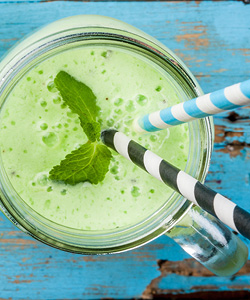
Fruit SmoothieIngredients:
- 1 cup apple juice
- 1 cup filtered water
- 1 cup frozen berries or fruit mix
- 1 scoop Miracle Reds or Macro Greens from MacroLife Naturals
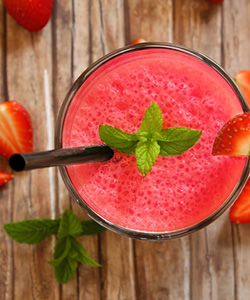
Do you know the story and benefits behind Macro Greens and Miracle Reds?
A nutritional supplement that tastes great and is easy to prepare, Macro Greens was created in 1998 by fitness expert Sylvia Ortiz to help her son lose weight and regain his health; and since its introduction has become one of the most popular products across the country. Macro Greens is a true green superfood containing 38 ingredients that feed the body at a cellular level. It nourishes the body with antioxidants, co-nutrients, enzymes, vitamins, minerals and amino acids. Macro Greens is made with no common allergens, certified organic barley grass and 37 additional synergistic ingredients.
- 38 nutrient rich superfoods
- 18 billion probiotics
- Richest alkaline greens formula
- Contains 5 servings of fruits and vegetables
- Boosts energy and supports natural weight loss
- Supports healthy immunity
- Promotes gentle daily cleansing
- Herbal antioxidants; aloe vera, ginkgo, grape seed extract
- Voted “best tasting greens”
- Non-GMO, vegan, gluten and dairy-free
- Antioxidant-Rich Fruits and Berries
- Power of 670mg Plant Steroids
- Super ORAC Acai, Goji, Mangosteen & Turmeric
- Complete Anti-Aging Antioxidant Spectrum
- Supports the Maintenance of Good Health
- Supports healthy immunity
- Perfect Post Workout Recovery Formula
- Nutrient-Rich Replacement for Juices & Sodas
- Non-GMO, Vegan, Gluten & Dairy Free
- Delicious Berry Taste
- PLUS: Non-Dairy Probiotic Culture. Contains 1 billion non-dairy “friendly bacteria” per serving. This helps with the digestion of foods and also with the absorption of vitamins and minerals.
Snacks
Krystal Rhodes-Skinner’s Birthday Cake Protein Yogurt BitesIngredients:
- 1/2 Cup Granola
- 1 Cup Plain Greek Yogurt
- 1 Scoop Gold Standard 100% Whey Birthday Cake
- Blend frozen strawberries, honey, non-fat yogurt, non-fat soy or almond milk, and 1 scoop of Macro Greens until smooth.
- Fill bottom of each indentation with granola, pressing firmly with spoon
- Bake at 350 degrees for 15 minutes or until golden brown
- Mix together yogurt & Gold Standard 100% Whey in small bowl
- Scoop mixture on top of granola in cooled muffin pan
- Top with fresh fruit, nuts, etc. and freeze until firm
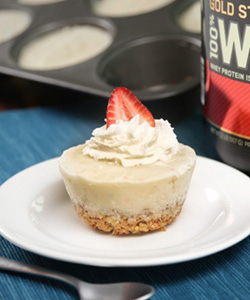
Birthday Cake Protein Pudding DipIngredients:
- 1 container of vanilla Greek yogurt
- 8 grams of sugar-free pudding powder
- 3 Tbsp. of fat-free milk
- 1 scoop Gold Standard 100% Whey Birthday Cake
- Place container of vanilla Greek yogurt in medium sized bowl
- Add other ingredients
- Mix until powder is dissolved
- Chill until served
- Enjoy as a pudding or dip
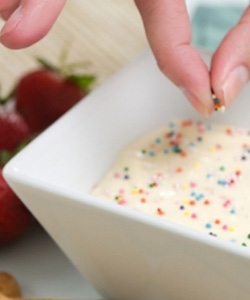
The Power of Protein
Whey protein is an excellent source of high quality protein. It is very digestible and quickly absorbed. It has a great deal of nutritional value and numerous health benefits.
- Promotes muscle growth
- Enhanced antioxidant defense
- Highly satiating to help reduce hunger and promote weight loss
- May lower blood pressure and help treat type 2 diabetes
- May help reduce inflammation and beneficial for inflammatory bowel disease
- May have beneficial effects on blood fats
Optimum Nutrition’s Whey Protein Isolates (WPI) is the purest form of whey protein that currently exists. WPIs can be costly to use, but rate among the best proteins that money can buy. That's why it’s the first ingredient on the Gold Standard 100% Whey™ label. By using WPI as the primary ingredient along with premium ultra-filtered whey protein concentrate (WPC), Gold Standard is able to pack 24 grams of protein into every serving to support your muscle building needs after training. Attention to detail also extends to mixability. This superior quality powder has been instantized to mix easily using a shaker cup or just a glass and spoon. There's no doubt that this is the standard by which all other whey proteins are measured.
- Whey Protein Isolate (WPI) main ingredient
- Whey protein microfractions from Whey Protein Isolates & Ultra-Filtered Whey Protein Concentrate
- Over 4 grams of glutamine & glutamic acid in each serving
- More than 5 grams of the naturally occurring branched chain amino acids (BCAAs) Leucine, Isoleucine, and Valine in each serving
- The "Gold Standard" for protein quality
Nutrition Disclaimer: I am not a certified nutritionist and make no claims to the contrary. Each individual’s dietary needs and restrictions are unique to the individual. You are ultimately responsible for all decisions pertaining to your health. This article is written and produced for informational purposes only. Statements within this site have not been evaluated or approved by the Food and Drug Administration. This website is not intended to diagnose, treat, cure or prevent any disease. Content should not be considered a substitute for professional medical expertise or treatment.



 MAIN MENU
MAIN MENU

